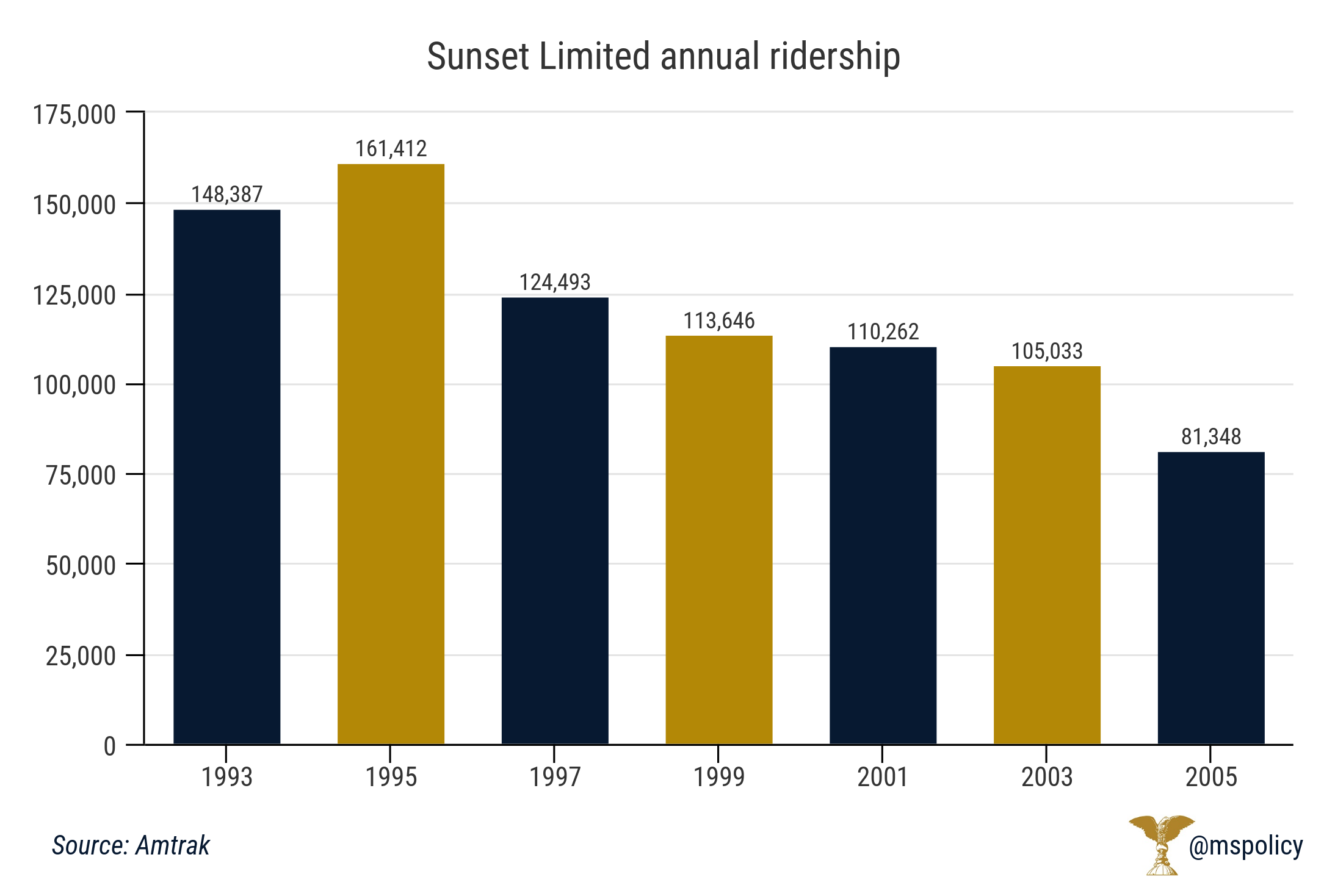Senate Bill 2542, authored by state Sen. Brice Wiggins (R-Pascagoula), would appropriate $4,696,500 toward bringing Amtrak service to the Mississippi Gulf Coast that was ended when Hurricane Katrina made landfall in August 2005.
The bill also says the money would be spent on improving freight rail service in the area as well.
The money would represent part of Mississippi’s share to restoring the east route of the tri-weekly Sunset Limited, which ran through the Mississippi Gulf Coast connecting Orlando, Florida with Los Angeles.
The service was terminated east of New Orleans in 2005.
According to the Southern Rail Commission, an advocacy group seeking more extensive passenger rail in the South, all three states on the route between Mobile and New Orleans would have to contribute money to qualify for Consolidated Rail Infrastructure Safety and Improvements grant program matching funds that could add up to $35.5 million.
The SRC cites a May 2018 study by the Trent Lott National Center at Southern Mississippi University that says that construction and renovation of the rail lines on the Coast would add $34 million to the state’s economy. It also says restoration of passenger rail on the Mississippi Gulf Coast between Mobile and New Orleans would add $6 million annually to the economy.
Like many long-distance routes, a new Sunset Limited train that connects Orlando with Los Angeles wouldn’t be profitable and would require annual subsidies from Alabama, Florida, Louisiana and Mississippi taxpayers. Amtrak’s own numbers in its 2015 feasibility study indicate that restoring service from New Orleans to Orlando would result in a $5.48 million loss annually.
Just running a roundtrip, standalone train from Mobile to New Orleans would yield a loss of $4 million. Having both a tri-weekly train from Orlando to Los Angeles and a separate round trip service between Mobile and New Orleans connection would result in an annual loss of $9.49 million.
This figure doesn’t include improvements to the rail infrastructure and stations along the route, which would cost, at minimum, $14,718,000 for just the restoration of passenger rail service and $102,954,000 for what the study says is a service level for ongoing operations.
Passenger rail hasn’t fared well in Mississippi, which has two Amtrak routes that pass through the state.
The Crescent train connects New Orleans with New York, while the City of New Orleans links the city with Chicago.
The most recent Amtrak numbers from 2017, show that the number of passengers boarding and detraining in Mississippi decreased from 118,200 in 2011 to 100,500 in 2017. That’s a decrease of nearly 15 percent.
The study blamed delays with the train as one of the key factors in the lowered ridership. These delays, according to the study, were due to interference with freight operations from CSX — which owns the track between New Orleans and Mobile — and equipment malfunctions with Amtrak locomotives and passenger cars.
The Gulf Coast Working Group’s report to the U.S. Congress on restoring Gulf Coast rail service also mentions that limited space with rail yards and bridge crossings would “present a challenge to operating passenger trains on schedule.”

According to the Amtrak 2015 feasibility study for restoration of rail service east of New Orleans, total trips declined from 148,387 in fiscal 1993 to 81,348 in 2005, a decrease of 45.2 percent.
Even taking into account that the federal government’s fiscal year ends on September 30, the numbers still pale when the final full year of service (2004) is considered, down 35 percent from 1993.